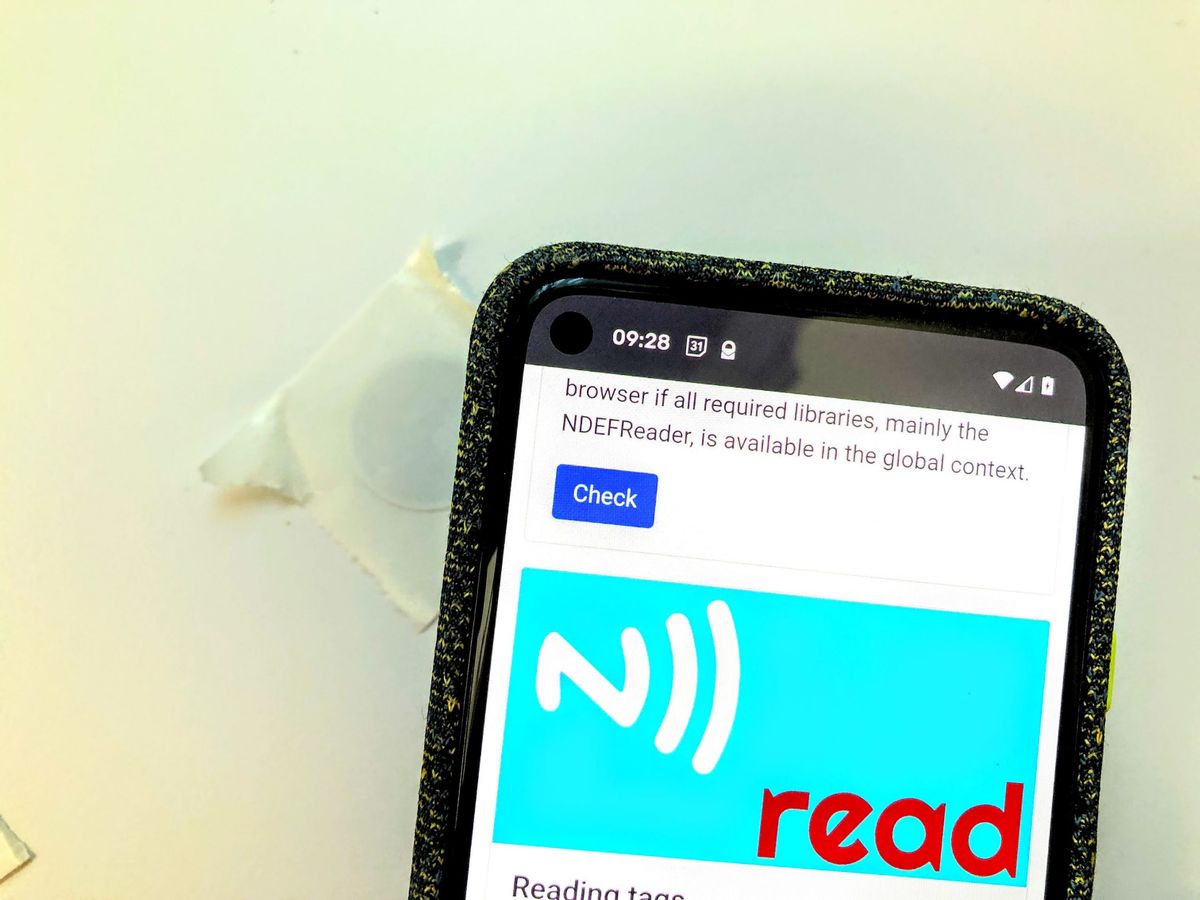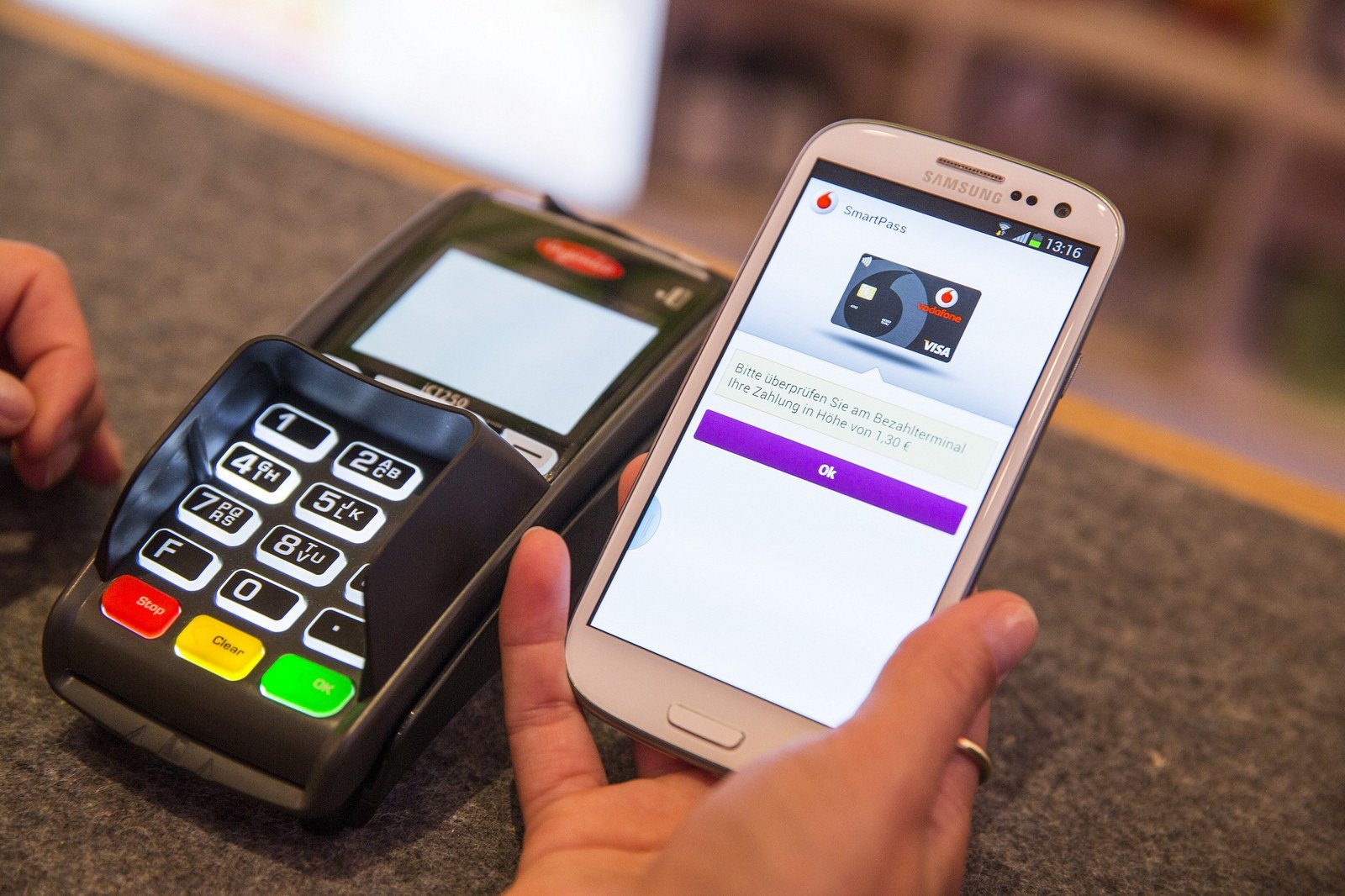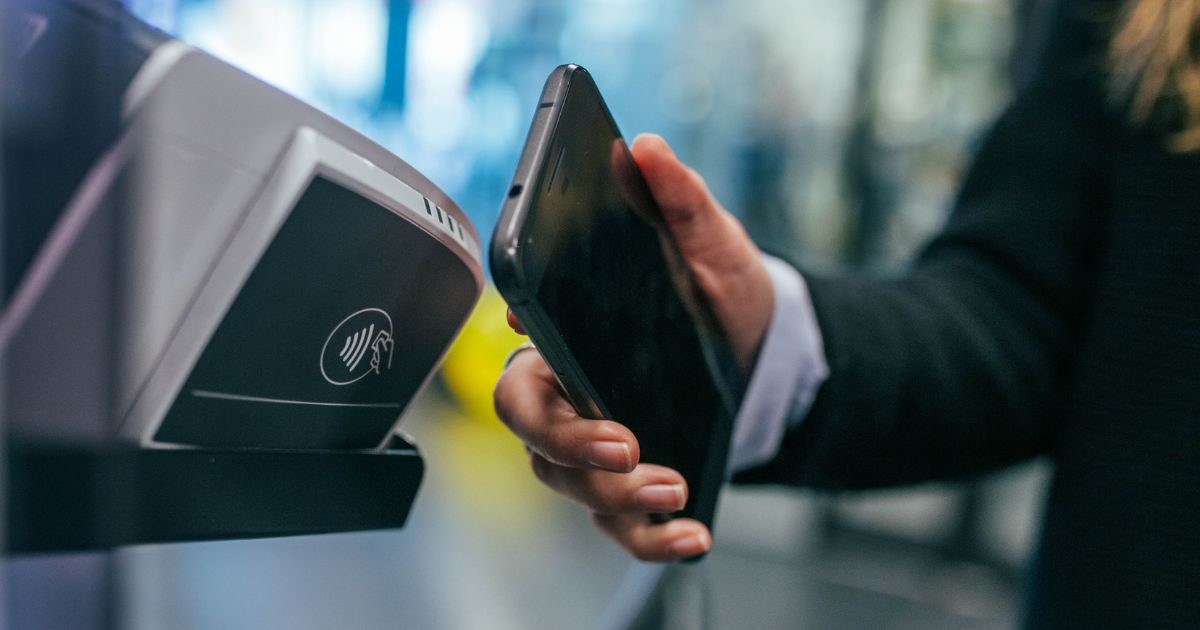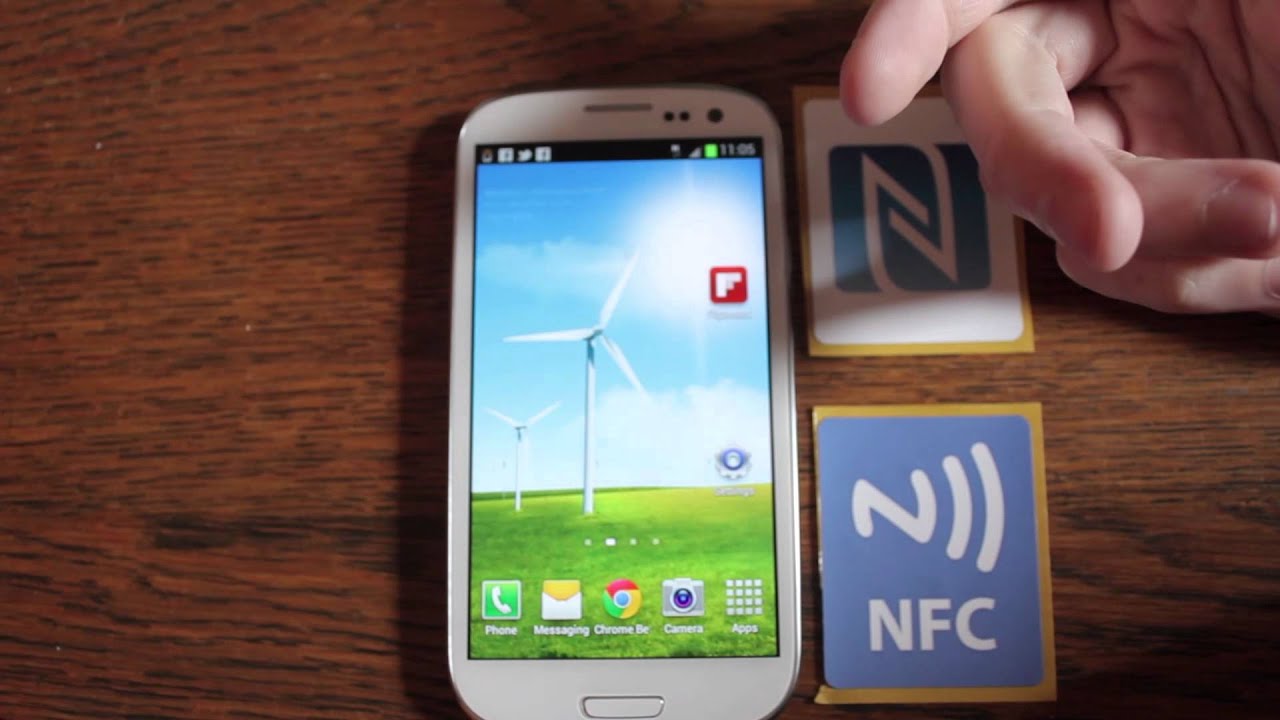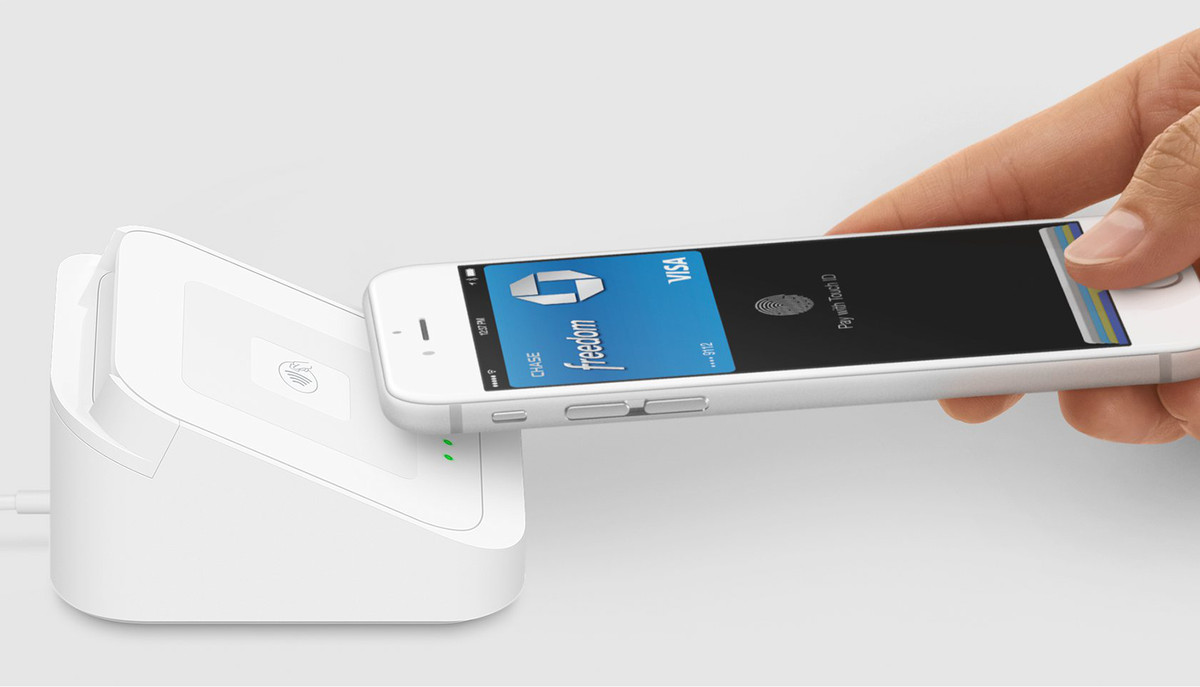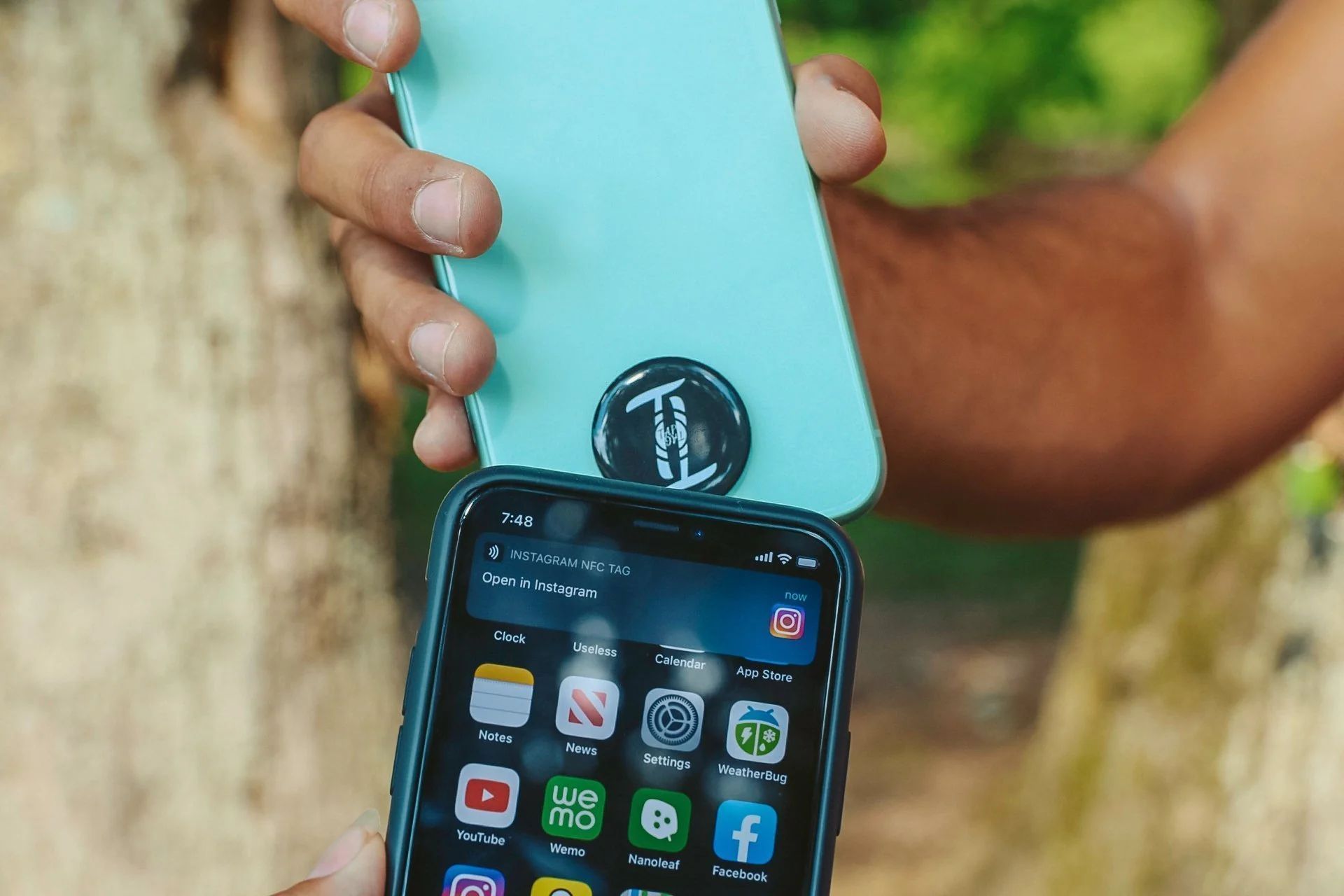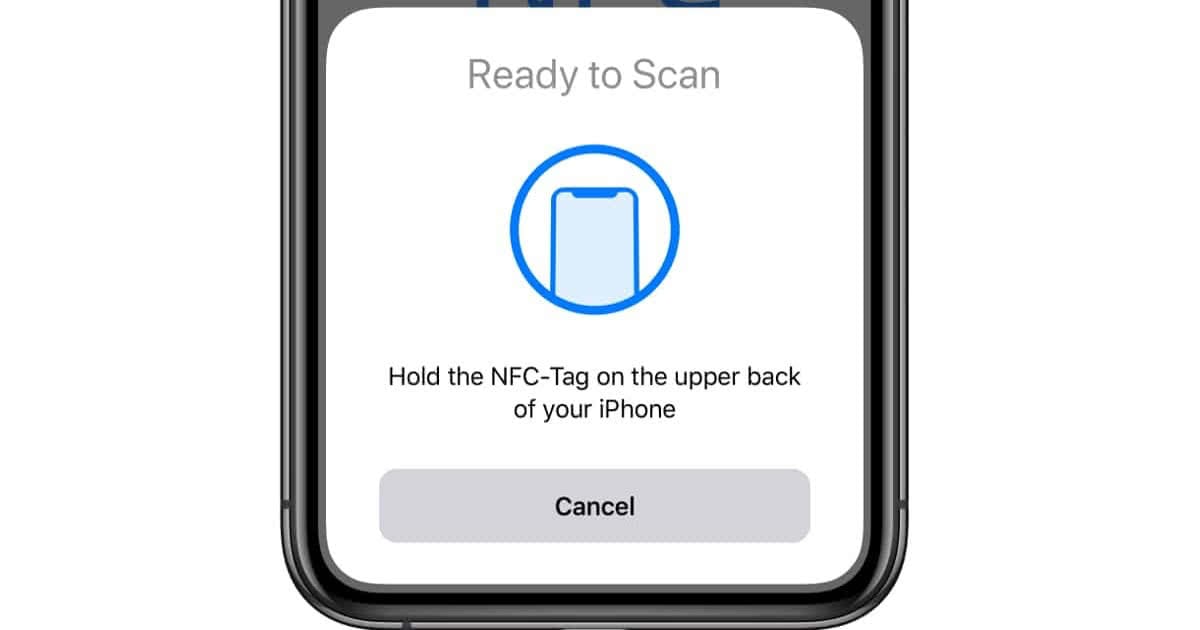What Is the NFC on My Phone?
NFC, which stands for Near Field Communication, is a wireless communication technology that allows devices to exchange data with each other when they are in close proximity, typically within a few centimeters. It is a feature found on many modern smartphones and other portable devices, such as tablets and smartwatches.
NFC enables quick and seamless interactions between devices, making it useful for a variety of applications, such as mobile payments, data sharing, and device pairing. With the help of NFC, you can simply tap your phone to make contactless payments, transfer files, or connect to other NFC-enabled devices without the need for cables or manual configuration.
The technology behind NFC is based on radio frequency identification (RFID), which allows devices to communicate by creating a short-range wireless link. NFC operates within the 13.56 MHz frequency range and can transfer data at speeds of up to 424 Kbps.
NFC is not limited to data transfer alone – it also supports communication with passive NFC tags, which are small stickers or objects with an embedded microchip. These tags can be programmed to trigger specific actions when they are touched by an NFC-enabled device. For example, a museum might place NFC tags next to exhibits, allowing visitors to tap their phones for more information or to access interactive content.
The versatility of NFC makes it a valuable feature on smartphones. In addition to its convenience for mobile payments and data sharing, NFC also enables numerous other functionalities, including contactless ticketing, keyless entry systems, loyalty program integration, and more.
While NFC is becoming increasingly popular, it’s important to note that not all smartphones have NFC capabilities. Therefore, when purchasing a new phone, it’s essential to check whether it has the NFC feature if you plan on utilizing it for various tasks.
In the next sections, we’ll look at some of the key benefits and limitations of NFC, how to use NFC on your phone, and address any security concerns related to this technology.
Overview
Near Field Communication (NFC) is an increasingly popular wireless communication technology that allows devices to communicate with each other when they are in close proximity. It is a short-range, high-frequency wireless communication technology that operates within the 13.56 MHz frequency range. NFC has gained popularity due to its convenience and versatility, offering a range of functionality for smartphone users and other NFC-enabled devices.
One of the main reasons NFC is important is its ability to facilitate contactless mobile payments. With supported mobile payment apps, users can simply tap their NFC-enabled smartphone on a contactless payment terminal to complete a transaction securely and conveniently. This eliminates the need to carry physical credit or debit cards and provides a seamless payment experience.
In addition to mobile payments, NFC enables quick and easy data sharing between devices with a simple tap. By tapping an NFC-enabled phone to another NFC device, users can share contact information, photos, videos, documents, and other files without the need for cables or complex pairing procedures.
NFC also supports the use of passive NFC tags, which are small objects embedded with an NFC microchip. These tags can be programmed to trigger specific actions when touched by an NFC-enabled device. For example, in retail stores, NFC tags can be placed on products to provide customers with additional information, promotions, or the ability to purchase the item with a simple tap. NFC tags can also be used in smart home setups, allowing users to control lights, appliances, and security systems with a touch of their NFC-enabled device.
One of the key benefits of NFC is its ease of use. The technology allows for quick, intuitive interactions, making it accessible to a wide range of users. Whether it’s making a payment, sharing files, or interacting with NFC tags, the process is simplified through the tap-and-go functionality.
However, it is important to note that NFC has some limitations as well. Its short-range communication capabilities mean that devices need to be within a few centimeters of each other to establish a connection. Additionally, NFC is not as widely supported as other wireless technologies like Wi-Fi or Bluetooth. While NFC is increasingly becoming a standard feature on smartphones, not all devices have NFC capabilities, so it is essential to check if your phone is NFC-enabled.
In the next sections, we will delve deeper into how NFC works, its common uses, and the benefits and limitations associated with this technology.
Why Is NFC Important?
Near Field Communication (NFC) is an important technology that has gained significant importance in recent years due to its numerous benefits and applications. Let’s explore why NFC is important and how it impacts our lives:
1. Convenience: NFC provides a seamless and hassle-free way to perform various tasks. Whether it’s making mobile payments, sharing files, or connecting to other devices, NFC simplifies these processes with just a simple tap. It eliminates the need for physical cards, cables, or complicated setup procedures, making our lives more convenient and efficient.
2. Contactless Payments: NFC has revolutionized the way we make payments. By using NFC-enabled smartphones or smartwatches, we can securely and effortlessly make contactless payments at retail stores, restaurants, and other establishments that accept mobile payments. This technology offers a fast and secure payment method, allowing us to leave our wallets at home and rely solely on our smartphones for transactions.
3. Seamless Data Sharing: NFC enables quick and easy data sharing between devices. With a simple tap, we can transfer photos, videos, documents, and contact information between NFC-enabled smartphones or other NFC devices. This eliminates the need for elaborate pairing processes or the use of cables, enhancing the efficiency of sharing information.
4. Smart Home Integration: NFC plays a crucial role in the growth of the Internet of Things (IoT) and smart home technology. By incorporating NFC tags into home automation systems, we can control various devices such as lights, thermostats, and security systems with a tap of our smartphones. This technology simplifies the management of our homes and enhances the overall smart living experience.
5. Ticketing and Access Control: NFC offers great potential for ticketing systems and access control. It can be used for contactless ticketing in transportation systems, allowing users to quickly validate their tickets by tapping their smartphones or NFC-enabled cards on the ticket readers. NFC-based access control systems are also widely utilized in hotels, workplaces, and other secure locations, providing a convenient and secure method for granting access.
6. Retail and Marketing Applications: NFC provides retailers and marketers with valuable opportunities to engage with customers. By placing NFC tags on products or in-store displays, businesses can provide additional product information, promotions, and even enable customers to make purchases with a simple tap. This technology enhances the shopping experience and opens up new avenues for personalized marketing campaigns.
7. Loyalty Programs and Coupons: NFC can be utilized to streamline loyalty programs and digital coupons. With NFC-enabled smartphones, users can easily redeem loyalty points, receive personalized offers, and digitally store and use coupons. This simplifies the customer experience, encouraging loyalty and promoting increased engagement with brands and retailers.
Overall, NFC is important because it offers a convenient, secure, and versatile means of communication and interaction between devices. Its applications in mobile payments, data sharing, smart homes, ticketing systems, retail, and marketing make it an essential technology for our increasingly connected world.
How Does NFC Work?
Near Field Communication (NFC) technology operates based on the principles of radio frequency identification (RFID) and electromagnetic induction. It allows two NFC-enabled devices to establish communication when they are in close proximity, typically within a few centimeters.
NFC uses electromagnetic fields to enable data exchange between devices. It operates within the 13.56 MHz frequency range, which is an unlicensed frequency for communication purposes. This frequency range ensures that multiple NFC devices can operate simultaneously without interference.
There are two modes of operation in NFC: active mode and passive mode. In active mode, both devices generate their own electromagnetic fields and communicate with each other. In passive mode, one device generates an electromagnetic field while the other device only receives and responds to the field.
When two NFC-enabled devices come in close proximity, they establish a wireless connection through electromagnetic induction. This occurs when the reader device’s electromagnetic field induces a current in the passive device’s NFC tag or antenna. The passive device then modulates the field and sends information back to the reader device by load modulation.
The exchange of data during an NFC transaction is extremely quick and typically takes place within a fraction of a second. The information transferred can include a variety of data types, such as text, URLs, contact information, or even small files. The data transfer rate of NFC is relatively low compared to other wireless communication technologies, reaching speeds of up to 424 Kbps.
In addition to device-to-device communication, NFC also supports communication with passive NFC tags. These tags are small objects or stickers embedded with an NFC microchip. When an NFC-enabled device comes into contact with an NFC tag, it reads the information stored in the tag and can perform various actions based on the programmed instructions. For example, NFC tags can be used to launch specific apps, open URLs, or trigger other predefined functions.
It’s important to note that NFC has a limited range of operation, typically within a few centimeters. This short-range communication offers security benefits since devices need to be in close proximity for the NFC connection to work. This reduces the risk of unauthorized access or interception of data during an NFC transaction.
Overall, NFC technology operates through the use of electromagnetic fields and induction, allowing for quick and seamless communication between devices. Its ability to support both device-to-device communication and interaction with passive NFC tags makes it a versatile and convenient technology for a wide range of applications.
Common Uses for NFC
Near Field Communication (NFC) technology has a wide range of applications that enhance convenience, efficiency, and connectivity for users. Let’s explore some of the most common uses for NFC:
1. Mobile Payments: One of the most widely known uses of NFC is for contactless mobile payments. NFC-enabled smartphones or smartwatches can be used to make secure payments by simply tapping them on a contactless payment terminal. This eliminates the need to carry physical cards and makes transactions faster and more convenient.
2. Data Sharing: NFC allows for quick and seamless data sharing between devices. By tapping two NFC-enabled devices together, users can instantly transfer files, contact information, photos, and videos. This eliminates the need for cables, pairing procedures, or complex file transfer methods, making data sharing effortless and efficient.
3. Smart Home Integration: NFC technology plays a significant role in smart home setups. NFC tags can be placed on objects, such as light switches or appliances, allowing users to control them with a simple tap of their NFC-enabled device. This enables users to easily manage their smart home devices, including lighting, temperature control, and security, enhancing convenience and home automation.
4. Access Control and Keyless Entry: NFC-enabled smartphones or NFC cards can be used for access control systems in various environments, such as workplaces, hotels, or events. Users can simply tap their device on an NFC reader to gain entry, eliminating the need for physical keys or access cards. This provides a convenient and secure method of access control.
5. Ticketing and Public Transport: NFC technology is widely used in ticketing systems for public transportation, concerts, and events. By tapping their NFC-enabled smartphone or NFC card on a ticket reader, users can quickly validate their tickets without the need for physical tickets. This streamlines the ticketing process and enhances the overall user experience in these scenarios.
6. Loyalty Programs and Coupons: NFC technology simplifies loyalty programs and digital coupons. Customers can easily redeem loyalty points by tapping their device on an NFC reader, eliminating the need for physical loyalty cards. Similarly, digital coupons can be stored and used by tapping an NFC-enabled device on an NFC tag or at a point-of-sale terminal, providing convenience for customers and increasing engagement with businesses.
7. Interactive Marketing and Advertising: NFC tags are frequently used in marketing campaigns to provide interactive experiences for customers. By placing NFC tags on promotional materials or product displays, businesses can provide additional information, offers, or incentives to customers who tap their NFC-enabled devices on the tags. This enhances customer engagement, drives conversions, and creates memorable brand experiences.
8. Healthcare Applications: NFC technology has applications in the healthcare industry. It can be used for patient identification, medical records access, medication management, and tracking pharmaceutical supplies. By using NFC-enabled devices and tags, healthcare professionals can improve efficiency and accuracy in patient care.
These are just a few examples of the common uses for NFC. Its versatility and convenience make it a valuable technology for various industries and applications, enhancing connectivity and simplifying everyday interactions.
Benefits and Limitations of NFC
Near Field Communication (NFC) technology offers several benefits that enhance convenience, security, and connectivity for users. However, like any technology, NFC also has certain limitations. Let’s explore the benefits and limitations of NFC:
Benefits of NFC:
1. Convenience: NFC simplifies various tasks such as mobile payments, data sharing, and device pairing by enabling quick, contactless interactions. Users can perform these actions with just a simple tap, eliminating the need for physical cards, cables, or complex setup processes.
2. Seamless Data Transfer: NFC allows for quick and effortless data sharing between devices. With just a tap, users can transfer files, contact information, photos, and videos between NFC-enabled devices. This speeds up the sharing process and enhances collaboration and communication.
3. Security: With NFC, the communication between devices is limited to a short range of a few centimeters. This close proximity requirement enhances the security of NFC transactions, as it reduces the risk of unauthorized access or interception of data. Additionally, NFC uses encryption techniques to ensure secure data transfer between devices.
4. Versatility: NFC supports a wide range of applications beyond mobile payments and data sharing. It can be used for access control, smart home integration, ticketing, loyalty programs, and interactive marketing. This versatility makes NFC a valuable technology for numerous industries and use cases.
5. Compatibility: NFC is increasingly becoming standard in smartphones and other portable devices. This widespread adoption ensures compatibility between devices, making it easier for users to take advantage of NFC functionalities without the need for additional hardware or complex configurations.
Limitations of NFC:
1. Short Range: NFC has a limited range of communication, typically within a few centimeters. This means that devices need to be in close proximity for NFC to work, which can be seen as a limitation for applications that require longer-range communication.
2. Limited Transfer Speed: Compared to other wireless technologies such as Wi-Fi or Bluetooth, NFC has slower data transfer rates. The maximum speed for NFC is 424 Kbps, which may be slower for transferring large files or streaming media.
3. Limited Device Support: While NFC is increasingly becoming standard in smartphones, not all devices have NFC capabilities. Therefore, compatibility may still be an issue, especially when interacting with older or budget devices that may lack NFC functionality.
4. Power Consumption: NFC technology, although low-power, still requires energy to operate. While the power used during NFC communication is minimal, it may have a slight impact on the battery life of devices, especially when used continuously or for prolonged periods.
5. Interference: Like any wireless technology, NFC can be subject to interference from nearby electronic devices or environments that generate electromagnetic fields. However, the close proximity requirement of NFC communication mitigates the likelihood of significant interference.
Understanding the benefits and limitations of NFC is crucial when considering its applications and implementation. While NFC offers convenience, security, and versatility, its limitations should be taken into account to ensure proper usage for specific needs and scenarios.
How to Use NFC on Your Phone
Near Field Communication (NFC) technology is becoming increasingly prevalent on smartphones and offers a range of convenient features. If your phone has NFC capabilities, here are the steps to use NFC:
1. Check NFC Settings: Firstly, ensure that NFC is turned on in your phone’s settings. Go to the Settings menu and look for “NFC” or “Connection settings” to find the NFC toggle switch. Enable it if it is not already turned on.
2. Mobile Payments: If you want to use NFC for mobile payments, make sure you have a supported mobile payment app installed on your phone. Add your credit or debit card details to the app and follow the provided instructions to complete the setup process. When you’re ready to make a payment, simply unlock your phone and tap it on the contactless payment terminal at the cashier.
3. Data Sharing: To share files, contacts, or other data using NFC, ensure that both your phone and the recipient’s NFC-enabled device have NFC functionality turned on. From your phone’s file manager or the specific app you want to share from, select the file or content you want to share. Then, tap your phone against the recipient’s device to initiate the transfer. Follow any prompts that appear on both devices to complete the transfer.
4. NFC Tags: NFC tags are small stickers or objects embedded with an NFC microchip. These tags can be programmed to trigger specific actions when tapped by an NFC-enabled device. To use NFC tags, simply ensure that NFC is turned on in your phone’s settings. Then, tap your phone against the NFC tag to trigger the programmed action. This can include opening a website, launching an app, or adjusting phone settings.
5. Access Control: If NFC is used for access control systems in your workplace, hotel, or other secured locations, simply tap your NFC-enabled phone on the designated NFC reader or access point to gain entry. This eliminates the need for physical access cards and provides a convenient and secure method for access control.
6. Smart Home Integration: To use NFC for smart home applications, ensure that your smart home devices are NFC-compatible and set up to work with your phone. Program NFC tags or enable device-to-device pairing by tapping your phone against the compatible devices or NFC tags. This will allow you to control and manage your smart home devices through your phone using NFC.
Remember that the specific steps may vary depending on your phone model and the version of the operating system you’re using. Refer to your phone’s user manual or the manufacturer’s support website for more detailed instructions.
By following these steps, you can effectively use NFC on your phone to enjoy the convenience and functionality it offers for mobile payments, data sharing, access control, smart home integration, and more.
NFC Security Concerns
Near Field Communication (NFC) technology provides convenience and versatility, but it is essential to be aware of certain security concerns that come with its usage. While NFC has built-in security features, understanding these concerns can help you make informed decisions and protect your data.
1. Unauthorized Access: One of the primary security concerns with NFC is the potential for unauthorized access. Due to the short-range nature of NFC communication, attackers would need to be in close proximity to intercept a transaction or gain unauthorized access. However, it is important to note that the risk of such attacks is minimal for most practical scenarios.
2. Data Interception: Although NFC uses encryption to secure data during transfer, there is still a possibility of data interception if the encryption is compromised. This risk is low since NFC connections are brief and require close proximity. However, to minimize the risk, it is crucial to only use trusted and secure NFC-enabled devices and applications.
3. Data Modification: NFC transactions can be vulnerable to data modification attacks. Attackers can attempt to modify or manipulate the data being transmitted between devices. However, modern NFC implementations include mechanisms to detect and prevent such attacks. It is crucial to use devices and applications that have implemented the necessary security protocols to protect against data modification.
4. Malicious NFC Tags: NFC tags can be programmed to trigger certain actions when tapped by an NFC-enabled device. However, malicious individuals could potentially create counterfeit or tampered NFC tags with the intention to deceive or exploit users. To mitigate this risk, it is advisable to only interact with NFC tags from trusted sources and avoid scanning tags that appear suspicious or unfamiliar.
5. NFC Relay Attacks: NFC relay attacks involve intercepting NFC data and relaying it to another device, allowing attackers to impersonate the victim’s device and perform unauthorized transactions. However, modern smartphones and NFC-enabled devices are equipped with security features like secure element chips and transaction authorization methods to prevent relay attacks. It is crucial to ensure that your NFC-enabled device supports these security features to minimize the risk of relay attacks.
6. Device Theft or Loss: If your NFC-enabled device is lost or stolen, there is a risk that someone could misuse the NFC feature to access your data or make unauthorized transactions. To mitigate this risk, it is advisable to enable security measures such as requiring authentication (e.g., PIN, fingerprint) before making NFC transactions. Additionally, promptly reporting the loss or theft of your device to your service provider can help protect your data and prevent unauthorized access.
While these security concerns exist, it is important to note that widespread instances of NFC-related attacks are rare. Adopting good security practices, such as using trusted devices and applications, being cautious of unfamiliar NFC tags, and implementing device security features, can significantly mitigate the risks associated with NFC usage.
Is NFC Safe to Use?
Near Field Communication (NFC) technology is generally considered safe to use, thanks to its built-in security features. While no technology is entirely immune to risks, understanding the safety measures in place can help users make informed decisions about NFC usage.
Encryption and Secure Communication: NFC utilizes encryption techniques to secure data during transmission. This ensures that data exchanged between NFC-enabled devices is protected against interception and unauthorized access. The encryption protocols used in NFC provide a high level of security, making it difficult for attackers to decipher intercepted data.
Secure Element Chips: Many NFC-enabled devices, particularly smartphones, contain a secure element chip. These chips store sensitive information, such as encryption keys and payment credentials, in a secure hardware environment. The secure element, often a separate microprocessor or a dedicated area within the device’s main chip, enhances the security of NFC transactions and protects against unauthorized access.
Transaction Authorization: NFC payment transactions often require user authentication, such as a PIN code or biometric verification (e.g., fingerprint or facial recognition), to authorize the transaction. This additional layer of security ensures that only authorized users can initiate NFC payments, significantly reducing the risk of unauthorized transactions.
Short-Range Communication: NFC operates within a short-range, typically a few centimeters, which limits the risk of remote attacks and eavesdropping. The proximity requirement ensures that devices involved in NFC communication are physically close, reducing the opportunities for malicious interception. This short-range nature of NFC also prevents accidental tapping or interference from nearby devices.
Security Updates and Standards: The NFC ecosystem is continuously evolving, with security standards and protocols regularly updated to address emerging risks and vulnerabilities. Device manufacturers, software developers, and payment service providers collaborate to maintain the security of NFC technology and implement necessary improvements. Regularly updating your device’s operating system and NFC-enabled apps ensures that you benefit from the latest security enhancements.
While NFC technology has these inherent security measures, it is important for users to also take their own precautions:
Use Trusted Devices and Apps: Ensure that you use NFC-enabled devices and apps from trusted manufacturers and developers. Stick to official app stores to mitigate the risk of downloading malicious or counterfeit NFC-enabled apps.
Be Cautious with Unknown NFC Tags: Exercise caution when interacting with NFC tags from unfamiliar sources. Avoid tapping on suspicious or tampered NFC tags to minimize the risk of potential exploits or attacks.
Report Lost or Stolen Devices: If your NFC-enabled device is lost or stolen, immediately report it to your service provider to deactivate NFC-related functionalities. This helps protect your data and prevent unauthorized use of NFC features.
In summary, while no technology is entirely risk-free, NFC technology is generally safe to use. The encryption and secure communication methods, along with the additional security measures in place, ensure that NFC transactions are secure. By using trusted devices, being cautious with NFC tags, and promptly reporting any device loss or theft, users can safely enjoy the convenience and functionality of NFC technology.
NFC vs Other Wireless Technologies
When considering wireless communication technologies, it is important to understand the differences and unique characteristics of each. Let’s compare Near Field Communication (NFC) with other commonly used wireless technologies:
Bluetooth: Bluetooth is a wireless technology commonly used for short-range communication between devices. Unlike NFC, Bluetooth has a longer range, typically up to 100 meters. Bluetooth is well-suited for tasks that require continuous data transfer, such as streaming audio or connecting peripherals like speakers and headphones. In comparison, NFC is designed for close-range communication, making it more suitable for quick and simple tasks like mobile payments and data sharing.
Wi-Fi: Wi-Fi is a wireless communication technology that provides high-speed data transfer over a larger range, typically up to several hundred meters. Wi-Fi is commonly used to connect devices to the internet, create local networks, and enable data-intensive activities such as browsing, online gaming, and video streaming. NFC, on the other hand, has a short range and is more suitable for quick interactions, such as contactless payments or sharing small files.
RFID: Radio Frequency Identification (RFID) technology is similar to NFC in terms of its principles and ability to transfer data wirelessly. RFID is commonly used for identification, tracking, and inventory management applications. However, RFID operates at different frequencies (e.g., low-frequency, high-frequency, ultra-high-frequency) and has a longer read range compared to NFC. While NFC is a subset of RFID technology, it is specifically designed for close-range communication and offers additional features beyond basic identification.
QR Codes: QR (Quick Response) codes are two-dimensional matrix barcodes that can be scanned using a smartphone’s camera or a dedicated scanning app. QR codes encode information such as website URLs, text, or contact details. Unlike NFC, which requires close proximity, QR codes can be scanned from various distances. However, NFC provides a more seamless and intuitive interaction, as it involves a simple tap rather than the need to scan a barcode.
Each wireless technology serves different purposes and has its own strengths and limitations. While Bluetooth and Wi-Fi are better suited for longer-range and continuous communication, NFC excels in quick, contactless interactions within close proximity. RFID and QR codes are other options for specific use cases such as identification and information encoding.
It’s important to note that these wireless technologies are not mutually exclusive. In fact, they can complement each other in various applications. For example, NFC can be used for secure and easy pairing of devices that then communicate over Bluetooth or Wi-Fi for continuous data transfer.
Understanding the differences between NFC and other wireless technologies allows users to select the most appropriate option based on their specific needs and requirements.
Is My Phone NFC-Enabled?
If you’re wondering whether your phone has Near Field Communication (NFC) capabilities, there are a few steps you can take to check:
1. Look for NFC in Settings: Start by accessing your phone’s settings menu. Look for an option related to “Wireless & Networks,” “Connection settings,” or a specific NFC category. Depending on your phone’s manufacturer and operating system, the exact location of the NFC settings may vary.
2. NFC Toggle: Once you’ve found the NFC settings, check if there is a toggle switch to enable or disable NFC. If you see the NFC toggle, it indicates that your phone is NFC-enabled. Toggle it on if it is currently off.
3. Check the Phone’s Specifications: If you’re unable to find the NFC settings or want to confirm further, refer to your phone’s specifications. Look for your phone model on the manufacturer’s website or search for it online, including the term “NFC.” The specifications page should indicate whether NFC is supported or not.
4. Contact the Manufacturer: If you’re still unsure about your phone’s NFC capabilities, you can contact the manufacturer’s customer support or check the official product documentation. Provide them with your phone’s model number or IMEI (International Mobile Equipment Identity) so they can assist you in determining if your phone supports NFC.
It’s important to note that not all smartphones have NFC capabilities. NFC may be more commonly found on newer models or mid-to-high-range devices. Budget or older smartphones may not have NFC as a feature.
If your phone does not have NFC capabilities, don’t be discouraged. Although you won’t be able to utilize NFC features, you can still find alternative methods or technologies to perform similar tasks. For example, instead of using NFC for contactless payments, you can explore mobile payment apps that use other wireless technologies like QR codes or magnetic secure transmission (MST).
If your phone is NFC-enabled, take advantage of the various possibilities this technology offers, such as mobile payments, data sharing, smart home integration, and more. Make sure to familiarize yourself with the specific NFC functionalities and use them in a secure and responsible manner.
Conclusion
Near Field Communication (NFC) technology has become an integral part of our lives, offering convenience, security, and versatility. With NFC-enabled devices, we can perform tasks like mobile payments, data sharing, smart home integration, and more with just a simple tap. NFC simplifies our interactions, eliminates the need for physical cards or complicated setup procedures, and enhances the overall user experience.
Throughout this article, we explored what NFC is and how it works. We discussed its common uses, benefits, limitations, security concerns, and compared it to other wireless technologies. We also provided steps to check if your phone has NFC capabilities.
It is important to note that while NFC offers numerous advantages, users should also be mindful of potential security risks. By taking precautions such as using trusted devices, being cautious with NFC tags, and promptly reporting lost or stolen devices, we can mitigate these risks and enjoy the benefits that NFC has to offer.
As NFC technology continues to evolve, it will likely find applications in even more areas of our daily lives. From contactless payments and data sharing to access control and smart home integration, NFC provides seamless connectivity and enhances our overall digital experiences.
Whether using NFC for personal tasks or adopting it in business environments, it is crucial to stay informed about the latest developments and security best practices. Being aware of how NFC works, its benefits, and limitations empowers us to make informed decisions while using this technology.
In conclusion, NFC technology has transformed the way we interact with devices and perform various tasks. Its convenience, versatility, and security features make it an essential component of our increasingly connected world. As we continue to embrace NFC, we can look forward to exciting advancements and opportunities for enhanced connectivity and seamless experiences.









